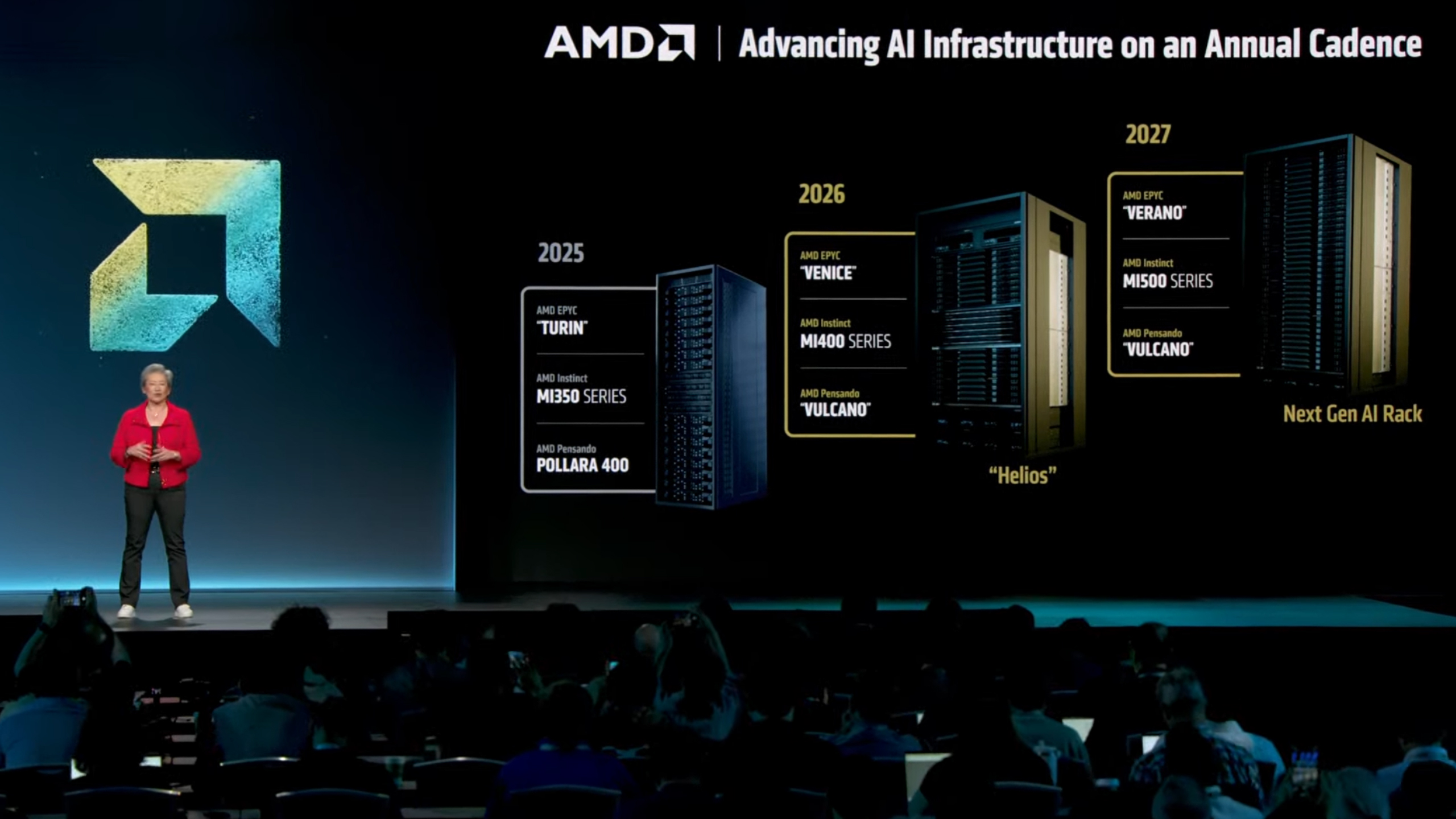AMD unwraps 2027 AI plans: Verano CPU, Instinct MI500X GPU, next-gen AI rack

AMD is accelerating its CPU, GPU, and AI rack-scale solutions roadmaps to a yearly cadence, so the company is set to introduce its all-new EPYC 'Verano' CPU, Instinct MI500-series accelerators, and next-generation rack-scale AI solution in 2027, the company revealed at its Advancing AI event.
"We are already deep in the development of our 2027 rack-scale solution that will push the envelope even further on performance efficiency and scalability with our next generation Verano CPUs and Instinct MI500X-series GPUs," said Lisa Su, chief executive of AMD, at the event.
AMD's 2026 plans for rack-scale AI solutions already look impressive as the company's first in-house designed Helios rack-scale system for AI will be based on AMD's 256-core EPYC 'Venice' processor (expected to deliver a 70% generation-to-generation performance improvement); Instinct MI400X-series accelerators projected to double AI inference performance compared to the Instinct MI355X; and Pensando 'Vulcano' 800 GbE network cards compliant with the UEC 1.0 specification. But the company is set to introduce something even more impressive the following year.
That would be AMD's second generation rack-scale system powered by its EPYC 'Verano' processors, Instinct MI500X-series accelerators, and Pensando 'Vulcano' 800 GbE NICs.
AMD did not reveal any specifications or performance numbers for its second gen rack-scale solution, EPYC 'Verano' processors, or Instinct MI500X-series GPUs. However, based on a picture the company provided, the post-Helios rack-scale machine will feature more compute blades, thus boosting performance density. This alone points to higher performance and power consumption, which will come handy as this one will have to rival Nvidia's NVL576 'Kyber' system based on 144 Rubin Ultra packages (each packing for reticle-sized compute elements).
Production of EPYC 'Verano' CPUs and Instinct MI500X-series accelerators in 2027 align perfectly with TSMC's roll-out of its A16 process technology in late 2026, its first production node to offer backside power delivery, a technology particularly useful for heavy duty datacenter CPUs and GPUs. We do not know whether AMD's 2027 processors and accelerators will rely on TSMC's A16, though it isn't unreasonable to speculate.
Follow Tom's Hardware on Google News to get our up-to-date news, analysis, and reviews in your feeds. Make sure to click the Follow button.
Get Tom's Hardware's best news and in-depth reviews, straight to your inbox.

Anton Shilov is a contributing writer at Tom’s Hardware. Over the past couple of decades, he has covered everything from CPUs and GPUs to supercomputers and from modern process technologies and latest fab tools to high-tech industry trends.